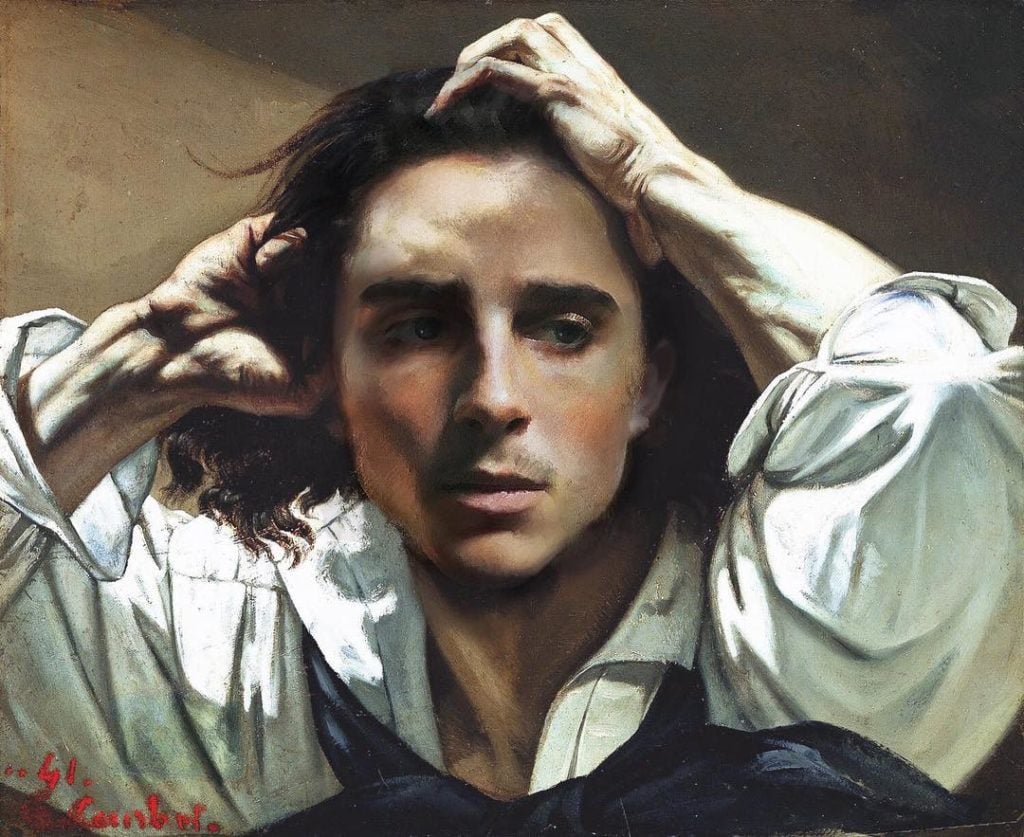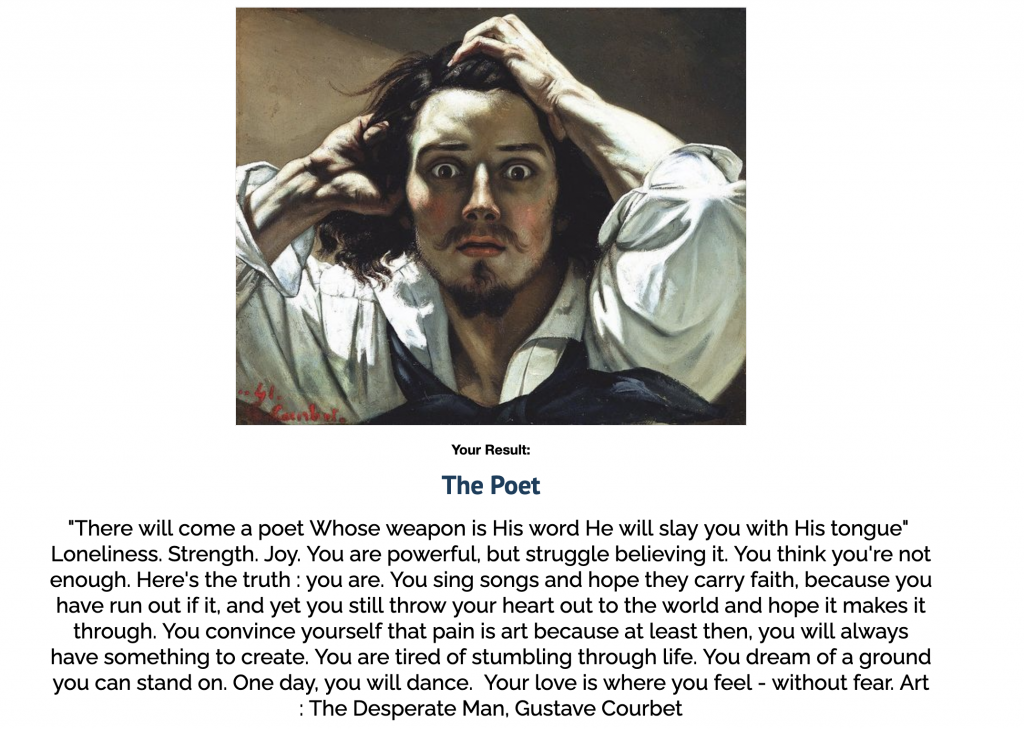The Painting Behind the Meme: Courbet’s Unhinged Self-Portrait
The hair-wringing portrait has had its fair share of Internet fame.
Early meme adopters might recognize Gustave Courbet’s supercharged self-portrait The Desperate Man (1843-45) from the rounds it made on Facebook circa the early 2010s, just before viral media grew into a full-fledged meme movement. Although the Desperate Man meme experienced somewhat of a renaissance amidst pandemic-era anxieties, it has yet to take off in the same manner as peers of the same age, like Grumpy Cat and Doge. But, there are layers of drama behind The Desperate Man. The meme that arose from Courbet’s youthful visage may yet have another 15 minutes of life after all.
ter all.

Chalamet meets Courbet’s The Desperate Man (1844-45) via Instagram @chalametinart.
Long before actor Peter Adam Rebadomia reenacted the artwork, or an Instagram comedian photoshopped Timothée Chalamet in Courbet’s place, those familiar with the Desperate Man meme format will recall that the painting was available on early image generators like Imgflip. There, meme-makers can still access Courbet’s dramatically lit, vexed face—crowned with hair-wringing hands—and add their own text atop. The meme’s captions thus far typically interpret the artwork’s tenor as one of terror, describing contempoirary problems like forgetting your cell phone or leaving the iron on. In Spring 2020, one student made a widely circulated edition of the Desperate Man meme around the prospect of missing a Zoom appointment. Florida State University dispersed her work across social media as part of an an ongoing art meme series.
Courbet began painting The Desperate Man at age 24, after a string of rejections from the Paris Salon left him questioning Romanticism. The work participates in the “expressive head” tradition, an academic exercise from the 17th century where an artist envisions themself as a mad genius. Reflecting on the practice, artist once said ”How I was made to suffer despair in my youth!” and the work itself is evidence of how the eventual social realist artist was often at odds with himself. It also somewhat satirizes the Romantic mindset’s emotional frenzy.
While Courbet himself was said to have loved this self portrait so much that he traveled with it, the original work of oil on canvas disappeared in 1978, following a Courbet retrospective at the Royal Academy. In 2006, London’s National Gallery organized “Rebels and Martyrs,” an exhibition exploring self-portraits by tortured art superstars like Vincent Van Gogh and Eugene Delacroix. One week before the show opened, The Guardian reported, an art advisor from BNP Paribas contacted curator Lois Oliver alleging “a client had seen publicity for the exhibition and wanted to offer a painting as a loan.” That painting turned out to be Courbet’s fabled self-portrait.

“The Poet” result from UQuiz
Why does The Desperate Man repeatedly resonate with masses to this day? For some, the work is a compelling symbol of madness. For others, it perfectly embodies male self importance. A few viewers even note that Courbet bears a striking resemblance to Johnny Depp. The work featured in a TikTok trend that made rounds last year, based on a UQuiz telling users whether they’re a soldier, poet, or king. Poets were greeted with Courbet’s timeless visage, proving the staying power of the famed artwork.
What’s in a meme? Sometimes, art. Art Behind the Meme brings you the low-down on the artworks that have achieved our era’s finest and rarest feat: virality. Read on for how these art-historical works have been reimagined for the age of social media.





No comments:
Post a Comment